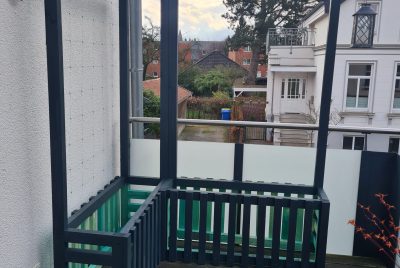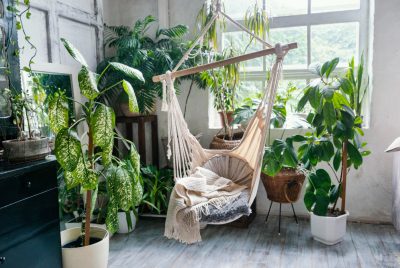Best Reasons to Do Gardening with Pots
As an avid gardening enthusiast and advisor, I am passionate about exploring the world of container gardening and the multitude of benefits it offers. Gardening with pots is not only a rewarding and enjoyable activity, but it also opens up a world of possibilities for growing plants in a convenient and versatile manner. In this article, I will delve into the numerous reasons why gardening with pots is a fantastic choice, especially when it comes to market gardening, where batch planting can ensure a continuous supply of fresh vegetables. So let’s dive in and explore the best reasons to embrace container gardening.
Gardening is a truly enriching experience, connecting us with nature, providing fresh produce, and beautifying our surroundings. While traditional in-ground gardening has its merits, gardening with pots offers unique advantages that make it an attractive option for many. With the right containers and a bit of creativity, you can transform even the smallest of spaces into lush, green paradises. Let’s explore why gardening with pots is such a delightful endeavor.
1. The Joy of Gardening with Pots
Gardening with pots brings immense joy and satisfaction. As you nurture your plants, witnessing their growth and blooming, you’ll experience a deep sense of accomplishment. The act of planting, watering, and tending to your container garden can be a therapeutic and stress-relieving activity, allowing you to connect with nature and find solace in its beauty.
2. Versatility and Accessibility of Containers
One of the greatest advantages of container gardening is the versatility it offers. Containers come in various shapes, sizes, and materials, allowing you to choose the perfect vessels for your plants. From traditional clay pots to modern self-watering containers, there is an option to suit every gardening style and requirement. Moreover, containers provide accessibility, allowing gardeners of all ages and abilities to engage in the joy of gardening.
3. Optimizing Space with Container Gardening
For those with limited space, container gardening is a game-changer. Whether you have a small balcony, a tiny patio, or a windowsill, you can create a thriving garden using pots. By utilizing vertical space, hanging baskets, and tiered arrangements, you can maximize the potential of even the smallest areas. Container gardening brings the beauty of nature into urban environments and allows anyone to enjoy the benefits of growing their own food.
4. Year-Round Harvests with Succession Planting
Another fantastic reason to embrace gardening with pots is the ability to implement succession planting. By staggering your planting periods, you can ensure a continuous supply of vegetables throughout the year. This method involves planting new seeds or seedlings in intervals, allowing for successive harvests as mature plants are replaced with fresh ones. Succession planting is particularly advantageous for market gardening, where a steady stream of produce is essential.
5. Easy Maintenance and Mobility
Compared to traditional gardens, container gardens are easier to maintain. Weeding becomes less of a chore, and pests and diseases can be controlled more effectively. Additionally, containers offer mobility, allowing you to rearrange your garden as needed. Whether you want to shield delicate plants from harsh weather or reposition them to optimize sunlight exposure, container gardening grants you the flexibility to adapt your garden to changing circumstances.
6. Customizing Soil and Nutrient Needs
Every plant has specific soil and nutrient requirements. With container gardening, you have full control over the growing environment. You can select and customize the soil composition, ensuring it caters to the needs of each plant. Furthermore, you can easily amend the soil with organic matter or fertilizers to provide optimal nutrition. This level of control is particularly beneficial for those aiming to grow specific plants with specialized requirements.
7. Aesthetic Appeal and Creative Expression
Container gardening allows you to unleash your creativity and personalize your outdoor or indoor spaces. The diverse array of containers, plants, and decorative elements available gives you the opportunity to design stunning compositions. From vibrant flower displays to herb gardens and cascading vines, the aesthetics of container gardening are limited only by your imagination. Create a tranquil oasis or a vibrant burst of colors—express yourself through the art of container gardening.
8. Gardening with Pots for Beginners
If you’re new to gardening, starting with pots is an excellent way to dip your toes into the world of horticulture. Container gardening is less daunting than traditional gardening, offering a manageable and controlled environment for learning the basics. It allows you to gain confidence, understand plant care, and develop essential gardening skills without feeling overwhelmed. Begin with a few easy-to-grow plants, and soon you’ll be reaping the rewards of your green thumb.
9. Picking the Right Containers
Choosing the right containers is crucial for successful gardening. Consider the size of your plants, their root systems, and their growth habits. Opt for containers with adequate drainage to prevent waterlogging, and ensure they are made from materials suitable for your climate. Clay pots are ideal for plants that require well-draining soil, while self-watering containers are excellent for those with busy lifestyles. Selecting the right containers sets the foundation for healthy and thriving plants.
10. Selecting the Ideal Plants
When it comes to container gardening, plant selection is key. Assess the available sunlight in your chosen location and pick plants that thrive in those conditions. Consider the size and growth habits of the plants to ensure they won’t outgrow their containers. Vegetables like tomatoes, peppers, and herbs are popular choices for container gardening. Additionally, flowers such as petunias, marigolds, and pansies can add a touch of beauty to your container garden.
11. Providing Adequate Sunlight and Water
Proper sunlight and watering are essential for the success of your container garden. Most plants require at least six hours of direct sunlight daily, so place your containers in well-lit areas. Monitor the moisture levels in the soil and water your plants accordingly, ensuring they receive enough hydration without becoming waterlogged. Remember, the needs of plants may vary, so observe and adjust your watering routine as necessary.
12. Nurturing Plant Growth with Fertilizers
To promote healthy plant growth and optimize yields, fertilizing your container garden is crucial. Choose organic or slow-release fertilizers specifically formulated for container plants. These fertilizers gradually release nutrients, providing a steady supply for your plants. Follow the recommended dosage and frequency to avoid over-fertilization, which can harm your plants. Regular fertilizing ensures your container garden thrives with abundant foliage and bountiful harvests.
13. Dealing with Pests and Diseases
Pests and diseases can pose challenges to any garden. However, container gardening simplifies pest and disease management. Regularly inspect your plants for signs of pests or diseases, and take prompt action if necessary. Use organic pest control methods such as neem oil or insecticidal soaps to keep pests at bay. Proper spacing between containers also reduces the risk of spreading diseases. With vigilance and proactive measures, you can maintain a healthy and thriving container garden.
14. Harvesting and Enjoying the Fruits of Your Labor
The ultimate reward of gardening with pots is the joy of harvesting and savoring the fruits of your labor. As your plants mature, carefully harvest the ripe produce and enjoy the freshness and flavor that only homegrown vegetables and herbs can provide. Embrace the satisfaction of knowing exactly where your food comes from, and revel in the delights of farm-to-table dining in your very own home.
Parting words
Gardening with pots offers a myriad of benefits that make it an appealing choice for both beginners and experienced gardeners alike. From the joy and therapeutic aspects of tending to your plants to the versatility, convenience, and continuous harvests that container gardening provides, it’s an incredible journey of self-expression and nourishment. So, embrace the beauty of container gardening, and let your green thumb flourish.
FAQs
1. Can I grow any plant in containers?
Container gardening offers a wide range of possibilities. While most plants can be grown in containers, it’s important to choose suitable plants for the available space, lighting conditions, and container size. Research the specific requirements of each plant to ensure success.
2. How often should I water my container garden?
The frequency of watering depends on various factors, including plant species, container size, weather conditions, and soil composition. It’s best to monitor the moisture levels by checking the soil’s moisture content with your finger. Water your plants when the top inch of soil feels dry.
3. What types of vegetables are well-suited for container gardening?
Many vegetables thrive in containers, including tomatoes, peppers, lettuce, herbs, radishes, and beans. Choose compact varieties or those specifically bred for container gardening. Consider the size and depth requirements of each plant to provide adequate space for root growth.
4. How do I prevent pests from damaging my container plants?
Preventing pests in container gardening involves regular monitoring and taking prompt action. Inspect your plants regularly for signs of pests, such as chewed leaves or visible insects. Use organic pest control methods, like neem oil or insecticidal soaps, and encourage beneficial insects to help control pest populations.
5. Can I reuse potting soil from previous seasons?
Yes, you can reuse potting soil from previous seasons with some precautions. Remove any debris, dead roots, or weeds from the old soil. Consider adding fresh compost or organic matter to replenish the nutrients. Additionally, mix in a slow-release fertilizer to provide essential nutrients for your new plants.





